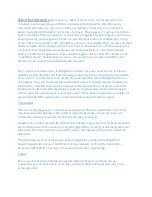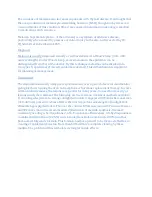
At present Tri-Luma TM (Galderma,USA) is the only one triple drugs approved by USA-FDA
for treatment of melasma. Hydroquinone has been associated with many complications in
dark skin patients i.e. contact dermatitis, exogenous ochronosis, confetti-like
hypopigmentation and rebound hyperpigmentation. Other topical treatments that had been
used for treatments include arbutin, kojic acid, licorice extract, azelaic acid, vitamin C, soy,
green tea, decapeptides, glove extract etc. The results were inferior to Kligman's formula but
claimed to have lower incidence of complications. Many of these products are ingredients of
over the counter whitening creams. In some countries hydroquinone has not been approved,
because of concern of mutagenic and toxicity e.g. Japan. The second technique for treatment
of melasma is by enhancing peeling of epithelial cells by chemicals e.g. retinoic acid, glycolic,
salicylic acid. The discoloration usually disappears spontaneously over a period of several
months after giving birth or stopping the oral contraceptives or hormone replacement
therapy. In cases without definite causes, the lesions may persist for many years. In cases
that severity of lesions justify the treatment, the following are the common treatment
methods available: 1) Avoiding of exposure to strong sunlight (ultraviolet range) with UVA-
blocker sunscreen (320-400 nm) prevention. Since UVA is the most important wavelength of
sunlight that stimulate hyperpigmentation. The over the counter UVA-sunscreen with PA
more than +++ and SPF more than 30 is recommended. 2)Reduction of melanin synthesis,
the most commonly use drug is hydroquinone 2-4% . To enhance effectiveness, 4%
hydroquinone is combined with tretinoin (0.05%) and steroids (fluocinolone acetonide
0.01%) and has been named Kligman's formula. This formula had been proved to be the most
effective in clearing of epidermal melasma. More than 60% will have complete clearing by
three months. The problem of this formula is its long term side effects. At present Tri-Luma
TM (Galderma, USA) is the only one triple drugs approved by USA-FDA for treatment of
melasma. Hydroquinone has been associated with many complications in dark skin patients
i.e.
contact dermatitis, exogenous ochronosis, confetti-like hypopigmentation and rebound
hyperpigmentation. Other topical treatments that had been used for treatments include
arbutin, kojic acid, licorice extract, azelaic acid, vitamin C, soy, green tea, decapeptides, glove
extract etc. The results were inferior to Kligman's formula but claimed to have lower
incidence of complications. Many of these products are ingredients of over the counter
whitening creams. In some countries hydroquinone has not been approved, because of
concern of mutagenic and toxicity e.g. Japan. The second technique for treatment of melasma
is by enhancing peeling of epithelial cells by chemicals e.g. retinoic acid, glycolic, salicylic
acid. Facial peels with glycolic or alpha hydroxy acids are popular in many countries. For
mixed type with dermal melanophages and dilated blood vessels, usually resisted to topical
treatments. These types are justified for method with deeper effects to melanocytes and
melanophages. Recently two laser systems have been shown to be effective for treatment of
deep lesions of melasma 1) flat beam, high energy Q-switched NdYAG (1064 nm)(Medlite
c6/Revlite, Hoya-Conbio,USA) 2) Fractional Erbium Glass (1550 nm) laser. The first
technique originates from Asia where mixed melasma are more common. The technique has
been called "Laser toning" which work by superficial vaporization of epidermis,
fragmentation and dispersion of melanin in melanocytes and melanophages and reduction of
melanocytes. The second technique works
Summary of Contents for Skin classic
Page 7: ...Telangiectasia Description with Pictures Evaluation Treatments Prognosis ...
Page 21: ...Flat Hyperpigmentation Descriptionwith pictures Evaluation TreatmentsPrognosis ...
Page 29: ...Skin Tags Description with pictures Evaluation Treatments Prognosis Skin Tag ...
Page 35: ...Melasma Description with pictures Evaluation Treatments Prognosis ...




















